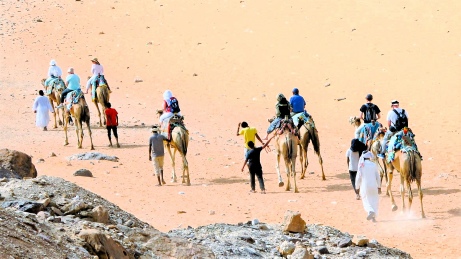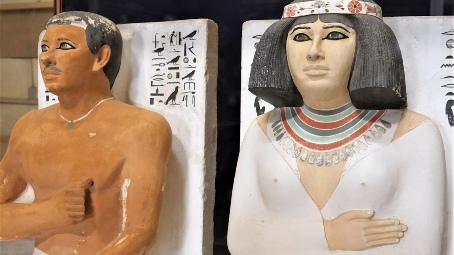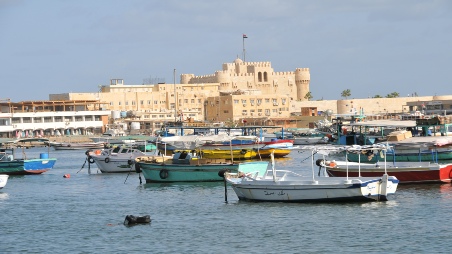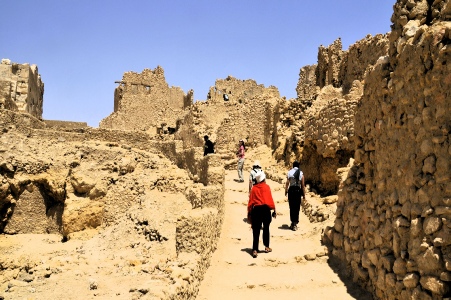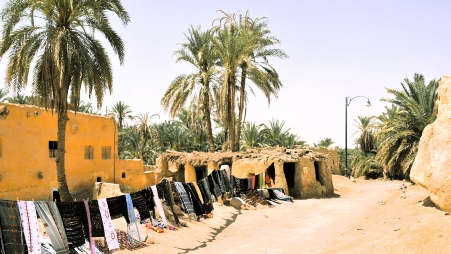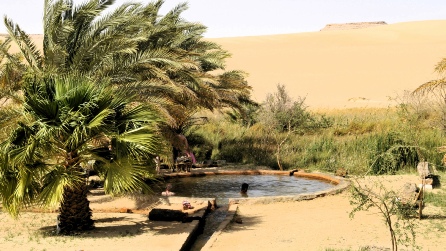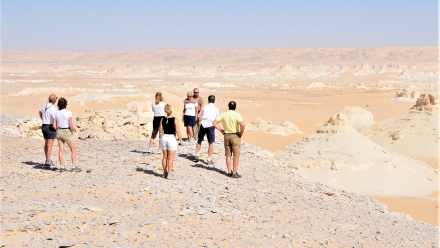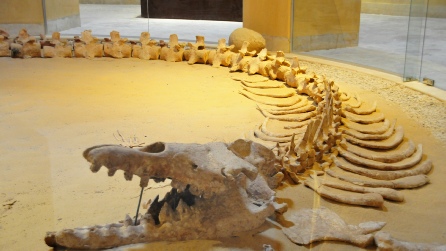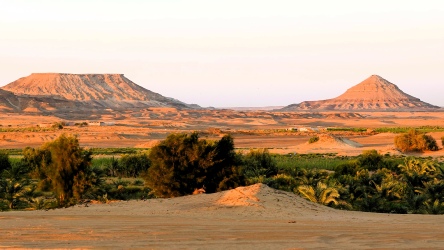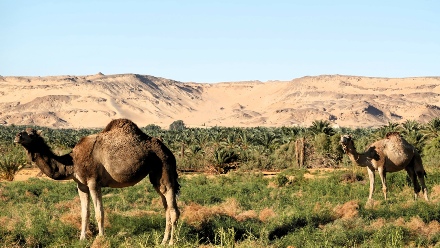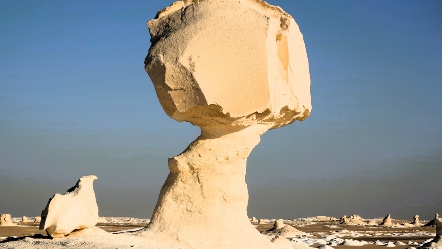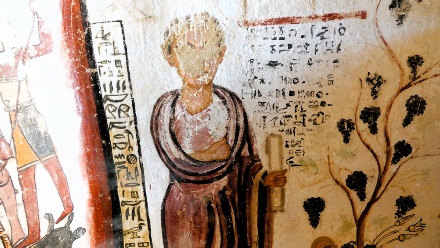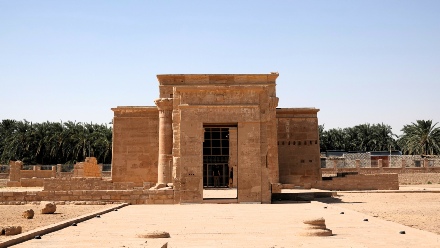
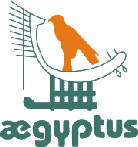
Your reliable partner in Egypt!
|
|
|
|
|
|
|
|
|
|
|
|
|
|
|
|
|
|
|
|
|
|
|
|
|
|
|
|
Jeep tours and expeditions
We organize jeep safaris (5-14 days) or hiking tours (4-7 days), as well as camel caravans (4-10 days) through the oases of the Western Desert with their characteristic culture. Visit Siwa, Baharija, Farafra, Kharga and Dakhla, and cross the Great Sand Sea or the White Desert. We have conducted expeditions to Gilf el Kebir and Djebel Uweinat. However, these places have not been approved for years. We have eight fully air-conditioned 4x4 Toyota Land Cruisers; all seats are forward facing and equipped with seat belts. Each vehicle has sand mats, spare tires and fire extinguishers. With each group we send a first aid kit, a cool box, a GPS device and a satellite phone.
Our drivers have years of experience in desert travel and know their way around any terrain. We have full equipment for the desert, but we stay in oasis hotels as camping has not been permitted for years.
Trekking tours and camel caravans
There are areas around the western oases that are famous for their beauty and offer numerous opportunities for trekking tours with pack or riding camels. There is, for example, the “Wadi Mushroom”, with its mushroom-shaped white limestone formations, which only forms a small part of the White Desert. There is also Djebel el Makhroum, a rock with a naturally formed hole, and its surroundings, as well as Khayyam el Inglis with its tent-like rock formations. The hikes start after breakfast and take about 2-3 hours. After lunch, you can walk for another 2 1/2 - 3 hours; camp is set up an hour before sunset. Tents and luggage are unloaded and everyone prepares their sleeping place while there is still daylight. In the evenings, everyone gathers around the fire for a well-earned rest. The Bedouins prepare food in their own way, with bread baked in the ashes (libda), and sometimes sweet pancakes (farashih). After the meal, there is singing and music with hand drums and double flute (arghul). The starlight and the warmth of the fire create an unforgettable background for a convivial evening.
EG 2: Siwa ... On the path of Alexander the Great
A nine-day trip with Cairo, Alexandria and the Siwa Oasis
Day 1: Europe - Cairo
Arrival at Cairo airport, assistance and transfer to the hotel. Overnight stay in Cairo. (D)
Day 2: The Grand Museum and Giza
After breakfast we visit the Grand Egyptian Museum. The largest archaeological museum complex in the world, it houses more than 100,000 artifacts. For the first time, the entire treasure collection of King Tut is on display alongside artifacts from prehistoric times through the many thousands of years of Egypt's pharaonic civilization to the more modern ancient Greek and Roman periods of Egyptian history. In the afternoon, drive to the pyramids of Giza. The pyramids of Cheops, Chephren and Mykerinos are the highest in Egypt and classic examples of pyramid architecture. They rise up on a high plateau on the edge of the Western Desert. The ancient Egyptians believed this to be the entrance to the realm of the dead. Next to the pyramids we admire the Sphinx. Sculpted from the rock, the hermaphrodite with a lion's body (symbolizing courage) and a human head (strength of mind) guarded the pharaohs' tombs and was supposed to deter grave robbers. Theologians see the figure of the sphinx as the primordial creature in a humble posture before God. Afterwards, stroll through the lively Khan el Khalili bazaar. Overnight stay in hotel. (BD)
Day 3: Cairo - Wadi Natrun - Alexandria
Drive to Wadi el Natrun, visit some monasteries dating back to the 4th century. Continue to Alexandria. The city of Alexandria, the second largest city in Egypt, was founded by Alexander the Great in 331 BC. We visit the New Library, an ultra-modern building directly on the Corniche, which was built to commemorate the old and very famous library of the past. We then visit the medieval fortress of Fort Qaitbey, built in the 15th century on the island of Pharos on the ruins of the ancient lighthouse of Alexandria. Check in at the hotel and stroll through the city center around the large monumental square Midan Saad Zaghloul overlooking the Corniche along the eastern bay. Dinner and overnight stay at the hotel. (BLD)
Day 4: Alexandria - Alamein - Siwa
After breakfast, continue along the Mediterranean coast to El Alamein, a place known as the site of an important battle won by the Allies in the Second World War. Visit to the war cemetery. Continue to Siwa. Siwa appears almost like a mirage: palm trees and fruit trees, irrigated gardens, springs and salt lakes, a population with Berber customs and traditions. Siwa is also known for its extensive cultivation of olives, dates and Mediterranean fruit (apricots and hazelnuts). Arrival in the late afternoon. Overnight stay in hotel. (BLD)
Day 5: Siwa - Salt Lakes - Great Sand Sea - Siwa
After breakfast we visit the area of the salt lakes.You can swim there.The highly salty water lifts the body and makes you float effortlessly. Continue the excursion and enjoy the beautiful views of the area. In the afternoon, we drive south with our off-road vehicles through the large dunes of the Great Sand Sea.After visiting Bir Wahed, an incredible lake in the middle of the dunes where you can swim (the water temperature is 37° C), we continue towards the “cold lake” to relax and walk among the dunes where you can discover shells and fossils.Hotel overnight stay in Siwa.(BLD)
Day 6: Siwa - Gara - Futnas - Siwa
After breakfast, we drive 75 km into the desert that surrounds the oasis until we reach the tiny oasis of El Gara, which is located exactly at the point where the Egyptian desert drops into the Qattara depression.The oasis is characterized by a picturesque setting, with only about 360 people living in a settlement perched on a picturesque, fortress-like cliff.Legend has it that Alexander stopped here on his way back from Siwa on his way to Memphis.Return to Siwa.Theologians see the figure of the sphinx as the primordial creature in a humble posture before God.Afterwards, stroll through the lively Khan el Khalili bazaar.Overnight stay in hotel. (BLD)
Day 7: Siwa - Arag - Zaituna - Siwa
After breakfast we explore the oasis of El Arag, a beautiful, uninhabited area in the middle of magnificent dunes that suddenly appear between imposing limestone cliffs. Return to Siwa. In the afternoon, visit the village of Zaituna, an ancient Berber village known for the oldest oil mill in Egypt, probably dating back to Roman times, and the ancient remains in its surroundings. Hotel overnight stay in Siwa. (BLD)
Day 8: Siwa - Matruh
In the morning we visit the ruins of the ancient city of Siwa (Shali), then drive to the oracle temple of Alexander the Great from the 26th dynasty. We also visit Jabal el Mawta with the interesting tombs of the rulers of the Siwa oasis in the ancient Egyptian period. After lunch, drive to Marsa Matruh on the Mediterranean coast - here you can enjoy the beautiful white sandy beach for the rest of the day. Overnight stay in Matruh. (BLD)
Day 9: Matruh - Alamein - Cairo
Early departure on the coastal road along the Mediterranean via el Alamein to Cairo. Overnight stay in Cairo. (BLD)
Day 10: Departure
Transfer to Cairo airport and departure. (B)
EG 2b Through the Egyptian oases to Luxor
A 9-day trip through the oases of the Western Desert and the Nile Valley
Day 1: Europe - Cairo
Arrival at Cairo airport, assistance and transfer to the hotel. Overnight stay in Cairo. (D)
Day 2: The Grand Museum and Giza
After breakfast we visit the Grand Egyptian Museum. The largest archaeological museum complex in the world, it houses more than 100,000 artifacts. For the first time, the entire treasure collection of King Tut is on display alongside artifacts from prehistoric times through the many thousands of years of Egypt's pharaonic civilization to the more modern ancient Greek and Roman periods of Egyptian history. In the afternoon, drive to the pyramids of Giza. The pyramids of Cheops, Chephren and Mykerinos are the highest in Egypt and classic examples of pyramid architecture. They rise up on a high plateau on the edge of the Western Desert. The ancient Egyptians believed this to be the entrance to the realm of the dead. Next to the pyramids we admire the Sphinx. Sculpted from the rock, the hermaphrodite with a lion's body (symbolizing courage) and a human head (strength of mind) guarded the pharaohs' tombs and was supposed to deter grave robbers. Theologians see the figure of the sphinx as the primordial creature in a humble posture before God. Afterwards, stroll through the lively Khan el Khalili bazaar. Overnight stay in hotel. (BD)
Day 3: Nature reserve: Wadi Rayan and Wadi Hitan - Bahariya
Drive by off-road vehicle to the Fayum Oasis, which was already cultivated and settled in Pharaonic times. Continue to Wadi Rayan, where a tributary of the Nile with a waterfall flows into Lake Karun, and to the national park of Wadi Heitan, where fossilized bones from the Palaeozoic period can still be found in situ. Continue through the outskirts of the Baharia Valley to the small oasis of Qasaa. Overnight stay in hotel. (BLD)
Day 4: Bahariya: Palms, mountains and archaeology
Today we drive across the fields of Qasaa to our nearby camel farm, where you can experience the good-natured black camels of Bahariya up close. Afterwards, a short drive leads to Gebel Dist and Maghrafa - the “pot mountain” and “ladle mountain”, landmarks of the area. The route continues off-road through the palm gardens towards the old oasis capital of el Qasr. Picnic lunch on the way at a panoramic point with a view over the old settlement and the palm trees of the oasis. Once in El Qasr, visit the small museum where some of the “Golden Mummies” are on display, as well as the tomb of Panentiu and his father at Qaret Selim. The day ends with a stroll through the market and a visit to a café. Overnight stay in the oasis of Qasaa. (BLD)
Day 5: Black Desert - El Heiz - White Desert - Farafra
Departure through the desert in the morning, past Bir Matar to the southwest; the Bir Matar well (“airport well”) was a heliport during the Second World War.The lesser-known rock formations of the Black Desert are located here.Shattered granite massifs are covered in light-colored drifting sand, most picturesquely seen at Gebel Marsus. From the Black Desert, the route continues south to the El Heiz depression, one of the small oases that form Bahariya. El Heiz was inhabited in Greco-Roman times.During the heyday of Coptic Christianity, there was a church here, an impressive monastery complex and numerous houses and farm buildings.The remains of a qasr or watchtower indicate a military garrison.From El Heiz it is only a short distance to the famous White Desert.Limestone formations carved by the wind appear as animal figures or mushrooms and give the landscape the appearance of a glacier.Overnight stay in a hotel in Farafra.(BLD)
Day 6: Farafra - Dakhla
In the morning we drive to the Dakhla oasis, which is one of the most beautiful in the western desert.There is evidence that Egyptians have lived in Dakhla since the 5th dynasty.To the west is the town of Mut, the largest settlement in the oasis.
El Qasr is the most important Islamic settlement in the Dachla Valley and was built on a Roman fort.The houses, up to four storeys high, were built from mud bricks. The hieroglyphic stone blocks used in the houses came from the Thoth temple in Amheida and were brought here. Other sights include the approximately 2000-year-old tombs of Muzawwaqa, which belonged to the Roman city of Amheida, and the Roman temple of Deir al-Hagar, which was dedicated to the Theban Triad. Hotel overnight stay.(BLD)
Day 7: Dakhla - Kharga - Luxor
Continue through the dunes to Kharga. Kharga is the largest and most popular oasis in the Libyan Desert. Thanks to government funding for the modernization of the oases in the Libyan Desert, it is also the best developed oasis. The El-Bagawat necropolis is one of the oldest Christian cemeteries in the world. Most of the graves consist of simple crypts built from mud bricks. The cemetery contains paintings depicting Noah's Ark in the form of an Egyptian barque. Also noteworthy are carved depictions of the Old Testament scriptures, including Adam and Eve, Daniel in the lions' den, the sacrifice of Abraham and Jonah being swallowed by a fish. Construction of the Hibis Temple began during the 26th Dynasty, under Pharaoh Psamtik II. Later rulers up to the Roman period took an active part in its construction. Continue to Luxor. Overnight in hotel. (BLD)
Day 8: Luxor
Early morning visit to the west bank: The Valley of the Kings is home to the tombs of the rulers of the New Kingdom (ca. 1550 - 1069 BC).We visit three tombs there.We then visit the Terrace Temple of Hatshepsut of the 18th Dynasty.In Christian times, the monastery of St. Phoibammon was built on the temple, which was used until the 11th century.We end the excursion with a stop at the Colossi of Memnon.In the afternoon, visit the extensive temple complex of Karnak.The largest temple complex in Egypt has been on the UNESCO World Heritage List since 1979, together with the Luxor Temple and the Theban Necropolis. Dinner and overnight stay in Luxor.(BD)
Day 9: Departure
Transfer to Luxor airport and departure. (B)

